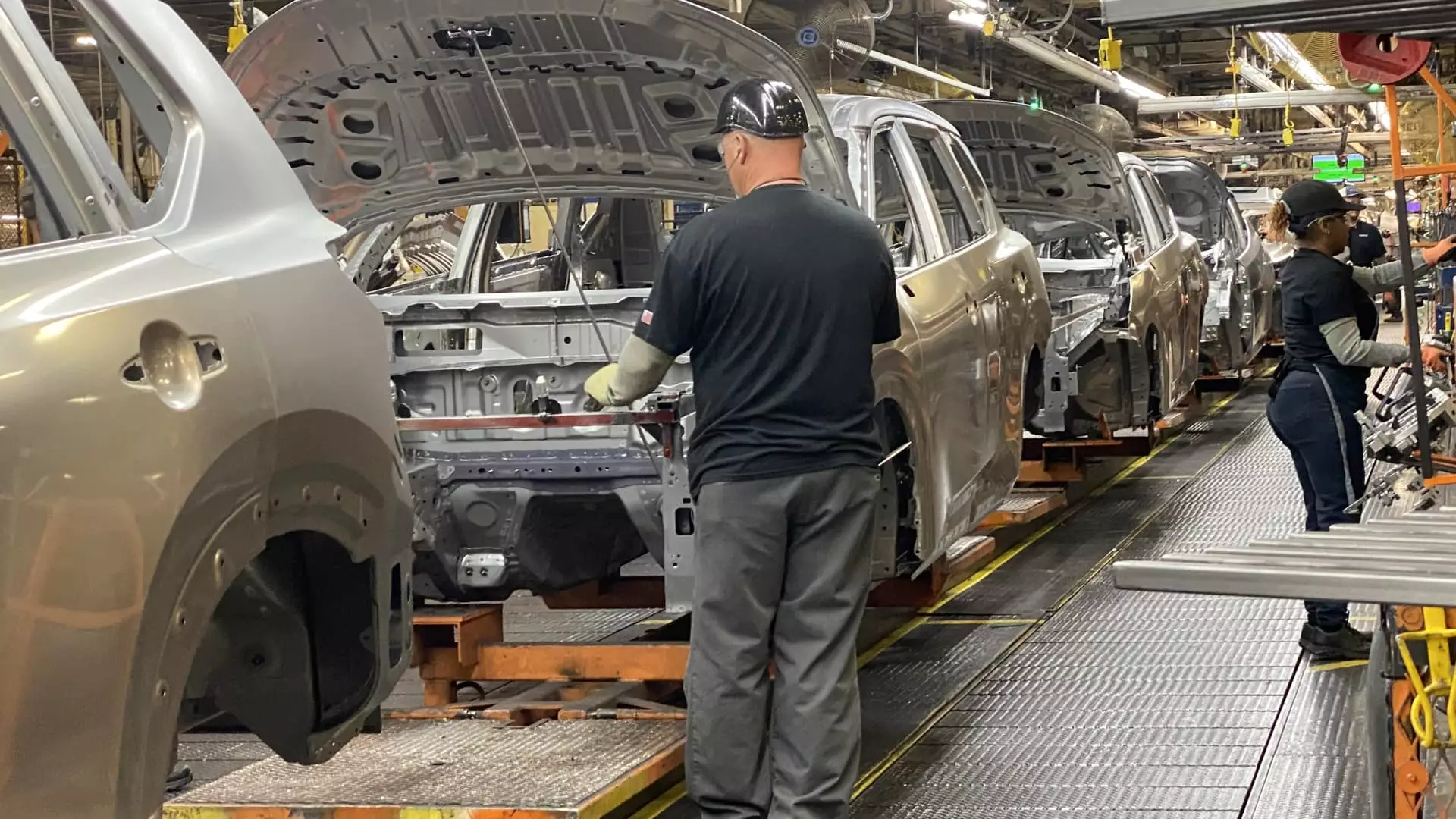The impact of President Trump’s 25% tariffs on imported vehicles has sent shockwaves through the automotive industry, and the repercussions extend far beyond simple economic metrics. While many analysts eagerly outline the negative outcomes—rising costs, dwindling sales, and an eventual economic downturn—it’s essential to peel back the layers of this situation to understand why this is not just bad policy, but a disaster waiting to happen for American consumers. The shift in policy is not only ineffective but downright counterproductive, demonstrating a fundamental misunderstanding of a globalized economy.
As tariffs bite deeper into the automotive supply chain, analysts predict that not only will vehicle sales plummet, but the overall cost to the industry could exceed a staggering $160 billion annually. This figure isn’t just a statistic; it represents the raw impact on American jobs and livelihoods. A 20% loss in U.S. new-vehicle market revenues, as identified by the Boston Consulting Group, is not merely a minor setback—it’s a logistical and economic catastrophe that will tighten the screws on consumer spending power across the board.
Cost-Burdens: The Hidden Impacts on Consumers
Untangling the complexity of these tariffs reveals a melancholic truth: they draw an economic line in the sand that most consumers will find impossible to cross. The reality is disheartening. With new vehicle prices already hovering near $50,000 on average, projected increases in the $2,000 to $4,000 range are not trivial. Consumers already grappling with high auto loan rates—surging near 9.64% for new vehicles—are now staring at a scenario where affordability completely evaporates. It’s as though the government is playing a reckless game of economic roulette, and the everyday American is holding the losing card.
Key statistics show that the average family is not just contending with rising prices but also with the burden of crippling loan rates adding an additional layer of strife to their financial picture. The reality of paying $6,000 more for an imported vehicle and $3,600 for domestically assembled options cannot be overstated. These are numbers that families depend on for budgeting, planning, and living within their means. Thrusting higher costs upon consumers while salaries stagnate creates an economic chasm that most families can’t hope to bridge.
Softening Demand: An Inevitable Reality
The ripple effects are not just limited to price hikes. As Goldman Sachs has pointed out, consumer demand is softening, which will further suppress vehicle sales. When faced with inflated prices alongside already high financing costs, potential buyers will likely put the brakes on their purchases. When the inventory of non-tariff impacted vehicles dwindles, families strapped for cash will find even fewer opportunities to snag a decent deal. The market is effectively shrinking in a self-fulfilling prophecy, pushing costs higher while reducing the choices available to consumers.
Anyone who believes that the manufacturing sector can merely absorb these costs and continue forward unscathed is living in a dream world. It’s mathematically impossible for companies to swallow the consequences of protectionist policy without eventually passing their losses onto customers. Faced with dwindling inventories and looming price hikes, consumers are likely to retract their purchasing intentions altogether.
The Broader Economic Ramifications
We must not forget the interconnectedness of our economy. A decline in auto sales doesn’t just negatively affect the automotive industry; it ripples through a plethora of sectors that rely heavily on robust vehicle sales. Job losses are imminent, and the ramifications extend to local businesses dependent on consumer spending that is predicated upon vehicle affordability.
Experts predict that this situation could lead to a decrease in vehicle sales by upwards of 2 million annually, both in the U.S. and Canada. This is not merely a loss of numbers but a potential tipping point for sectors spanning from finance to manufacturing and retail. The entire economic framework stands to be destabilized as consumer confidence erodes and disposable incomes shrink.
A Chance for Change: Reassessing Trade Policies
It’s clear that the current tariff structure—rather than protecting American jobs—threatens them at every turn. It’s time for a reevaluation of these archaic policies in favor of strategies that promote international cooperation, fair trade, and genuine economic growth. Rather than walling off American consumers from a global economy, we should be looking at innovative ways to support domestic manufacturing without caging ourselves in a whirlwind of protectionism.
If we truly want to foster a vibrant automotive industry that thrives both domestically and internationally, the focus has to shift from taxes on imports to investing in local innovation and manufacturing improvements. Only then can we create an environment where consumers are empowered, businesses can flourish, and economic stability can be achieved. The clock is ticking, and the question remains: will we learn from the impending disaster or continue to drive blindfolded into the future?

